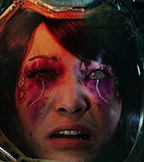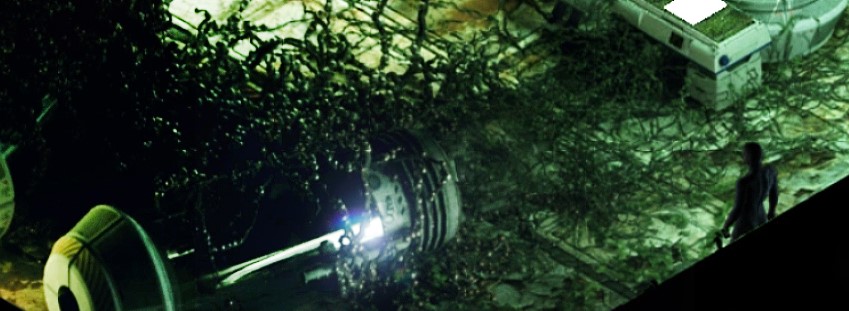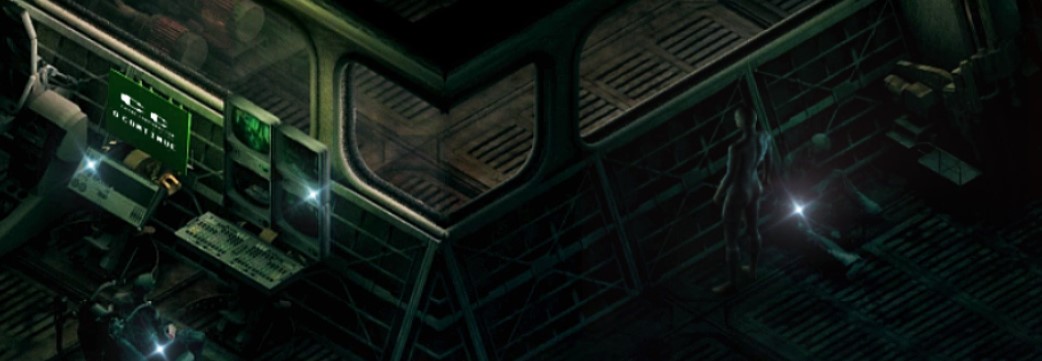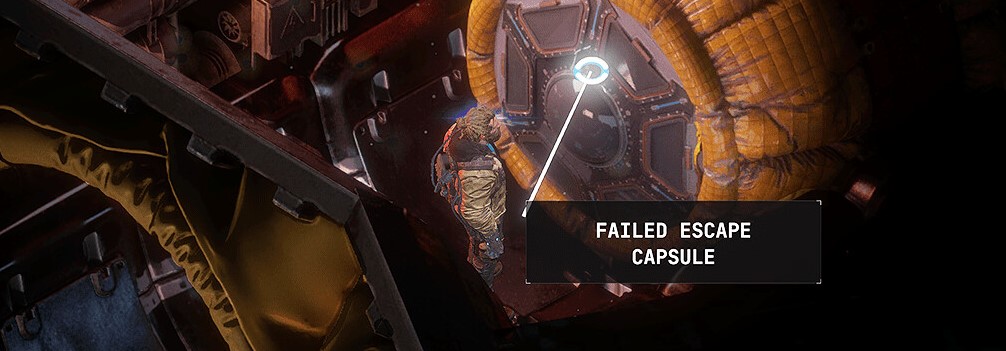Welcome to an interview with
The Brotherhood, the developer team behind games such as
Stasis, and
Beautiful Desolation. In just a few days (two to be exact) their new title
Stasis: Bone Totem will be released, which will be the third game in the excellent horror adventure series set in the world of Stasis. In this interview we talk about a little of everything, from the initial Kickstarter days of
Stasis to their latest upcoming game, and what inspired them to make them. Enjoy!
Tell me about The Brotherhood, how did it come to be and why? And who is the Brotherhood?
The Brotherhood comprises myself (Chris) and my brother (Nic). We worked together for a decade before moving into game development, running a 3D illustration and design company specializing in architectural 3D modeling.
We’ve been making games (and talking about making games) since the mid-90s- from board games to PC games – but never saw it as a viable career path until the success of
Broken Age on Kickstarter.
I had been working on
Stasis for a few years by that point, and we decided to put it on Kickstarter to see if there was an interest in it – and the rest is history!
Do you make everything yourself, or do you outsource anything?
We keep as much game development as possible between us, but we do have a bookkeeper and someone who does additional 3D modeling as needed.
For
BONE TOTEM, we worked with an external screenplay writer and audio director for the character work.
We also enjoy working with composers and often outsource some creative writing. Working with other creative people is something we enjoy. It can be hard to let that bit of control go sometimes, but it’s always been a very rewarding experience when other brains are involved in the creative process.
Who does what? And isn’t that a lot of work for only the two of you?
We share much of the design work. I do all of the art, and Nic does the programming. We share sound design responsibilities and make additional music where needed. We have been working together for so many years that we have a shorthand with each other – it makes working on complex projects like this a genuinely enjoyable experience.
Let’s start in chronological order. Stasis (2015) was your first game from a Kickstarter that was pretty successful. Was running the Kickstarter campaign a stressful time?
That feels like a lifetime ago!
It was extremely stressful but very rewarding. Knowing that there were people out there who were excited about the project was an incredible feeling. There was a lot of positivity around Kickstarter then, and it was hard not to be swept up in this wave of infinite possibility. However, when the dust dies down, the reality of ‘now we have to MAKE it’ starts to set in – and that can be incredibly stressful.
Did you believe it would be successful, or was it a gamble?
Every game is a gamble, but you must have a part of you that believes 100% in its incredible success. It’s that part that makes you put in those extra hours and weather the grinding nature of game development.
Did you have a contingency plan, would the game still get made if it failed? I read that you had already worked on it beforehand for a couple of years.
At the time of developing
Stasis, Nic and I still had a company that we ran. Nic took over the duties there, and I focused on the game.
If the game turned out to be a commercial failure, we still had a source of income – that safety net let us take some risks and move forward with the game’s development. It was always the plan – Nic and I only do things with many backups and a contingency in place.
I remember that you got a fair bit of space in online magazines during that time. How come, was it luck or did you have to work hard for all the attention?
Back then, Kickstarter was riding a big nostalgia wave, and many online publications had dedicated Kickstarter spotlight sections. It made it easier to get attention because, often, they wanted to kill those sections. When the various larger Kickstarter failures started coming to the fore, many spotlight sections died off.
Has the time changed since then? Is it harder or easier to get coverage?
While we have still managed to maintain a healthy relationship with the gaming press since then – with much of the industry moving over to YouTube and Twitch, which is an entirely different way of engaging an audience.
Many more people are willing to spotlight your projects – but their audiences vary in size from a few hundred to a few million. You just have to be active with your social media and maintain relationships when possible.
What engine does Stasis run on, and was it a good choice for the game you had in mind?
The first
Stasis ran on Visionaire. For someone with no coding experience, I was very happy with it. It’s an excellent adventure game engine – but it can be limited. It doesn’t play nicely when you try to make it do something it’s not supposed to!
Without Visioniare, there would never have been a
Stasis, so I’m incredibly happy that the engine exists!
These days,
STASIS; BONE TOTEM uses Unity and our own isometric framework.
Was it a commercial success, did it exceed expectations or underdeliver?
I was hoping for a three-picture movie deal. We actually had a film company call us about a deal – nothing happened there, BUT the game was successful enough for us to consider changing careers. Considering we are now about to release our fourth game, the groundwork
Stasis laid is solid for our company.
What inspired you to make a horror game like Stasis? It reminds me of Event Horizon and similar space horror-themed stories.
I adore sci-fi horror –
Event Horizon is right up there! But there are large doses of
Alien,
Aliens,
Sunshine,
Dead Space – it’s an amalgam of all the movies and stories I love.
Then two years later you released Cayne (2017) and it was a free release. How come?
When
Stasis did well enough for us to consider a career change to full-time development, we decided to use
Cayne as a test project to see if we could cut down the development time from six years to something reasonable while working together.
The idea to release it completely for free was to give something back to the community and get some attention on our next game –
BEAUTIFUL DESOLATION.
Was it successful, did it have the intended effect?
CAYNE was very successful in terms of eyeballs and players. We had a supporter’s DLC that included the Soundtrack, which has sold well for a free game!
I still see people posting lets plays and reviews of it years later. The game is strange, but the story resonated with people. We also tried to iterate on the UI that we created for
STASIS and make it better and more accessible.
For us – importantly – it cemented that Nic and I could create and release a game together.
Why didn’t you sell it as a minor story DLC for Stasis? It seems to be the perfect fit for something like that.
In retrospect, we probably should have done so, but
CAYNE has pushed lots of players into grabbing our other games, which is a bonus!
Since Cayne is a prequel to Stasis and is a part of the same universe, do you see it as a crucial story element for a complete picture?
I’ve always thought of the Stasis series as an anthology – with each story exposing a bit of this strange alternative world.
Cayne does expose an important part of that lore – but I get that it’s not for everyone!
Is it a required playing, to understand everything in the world of Stasis?
If you love the world of STASIS I think you’ll get a lot out of
CAYNE – but if you decide to skip it, it doesn’t make any of the other games any less enjoyable!
With this being your second game in the same series, how does it feel to create a fictive world that you have full control over?
It’s always fun to imagine new corners of this place. I have ideas for stories set in different eras and places, focusing on major figures and smaller people worldwide. We need a roadmap – but we have a pretty good idea of how the world works. It’s a lot of fun to think of what areas we can expand into!
Does it require much “carefulness” when it comes to lore and such?
We have a master document to refer to when writing out times, dates, and other major events. It has things like the major cities, how the religion works, and levels of technology – but it’s a living document that we alter as we go along. That’s part of the fun – seeing what fits, and if something doesn’t – how can we make it fit?
Then three years later you released Beautiful Desolation after another successful Kickstarter. Was it easier to run the Kickstarter the second time around?
Not at all! It was just as stressful – but we had the advantage of being full-time on it. The disadvantage, however, was that we simultaneously released
Cayne with the campaign, so we had the pressure of a game release AND a Kickstarter.
How come a Kickstarter was needed, didn’t Stasis pay for development? Was it to gauge interest in the project?
It was mainly to gauge interest in the project – and see if the first was just a fluke! Running the campaign when Kickstarter was in a downward swing was good. It was still successful, not just because Kickstarter was in vogue then.
Kickstarter campaigns also set up accountability. You HAVE to complete the project, forcing you to make smart design choices.
Beautiful Desolation is a totally different game from Stasis, going by setting at least. How come this was made instead of continuing the world of Stasis?
Existing in the halls of sci-fi horror for too long can get quite oppressive – it was a lot of fun to switch to an entirely new location and game style.
Beautiful Desolation has an unusual background for sci-fi, namely Africa. Was the location an important factor since you are from South Africa?
Nic and I have always wanted to set a cool science fiction story in our backyard. South Africa has an incredibly rich history and amazing aesthetics that we wanted to explore. Fusing that with our love of Post Apocalyptic worlds seemed like a natural fit for us!
Who came up with the story, and what inspired it?
Both Nic and I worked on the story together. I wrote a short story about an alien robot in post-apocalyptic Africa a long time ago, and we took that basic premise and expanded it into the story of two brothers and their dog going on an adventure.
The tribes, homelands, and meta-story were all worked on by us over long walks and lots of coffee!
For not being a horror, it still had a touch of it to me. Was that intentional?
That’s very much just Nic and my sense of design. We like stuff that’s twisted. Why make a regular robot when you can make a cyborg obsessed with adding fresh meat to her metallic bones?
I enjoy tabletop roleplaying, and all of my stories inevitably have some sort of horror element – it’s just the stuff I enjoy!
What engine does Beautiful Desolation run on?
Beautiful Desolation was done in Unity using the same framework we built for
Cayne.
Better for the intended purpose?
Unity is a workhorse, and the framework that Nic has developed for all these years is incredibly solid.
Before we talk about your upcoming game, I got to ask you about Wasteland 3. I remember seeing a collaboration between your company and InXile, what happened to that? Did it lead to anything, and why did it happen in the first place?
I worked with Bryan Fargo on the early concept pieces when he was just trying to get the ideas from his head out into the world. Chatting with him and creating the artwork from his descriptions was a lot of fun.
We still keep in contact and even visited the InXile offices when we were in California a few years back.
I’m also curious since you now have several games under your belt, have you gotten many requests for collaborations, freelance work, or publisher interest?
We still do contract work for some larger and a few up-and-coming companies. It’s a tiny industry, and everyone knows everyone else. I love working with other creative people, so we are always open to it! Most of it is under NDA, but we operated an outsource studio for so long that deep down, I think we love that sort of work. It wouldn’t be much fun if we only worked on our own games forever.
Is maintaining independence important, or could you work under a publisher?
Our independence is very important to us – but some publishers out there let you operate with independence. Hopefully we can continue to completely self-fund our projects – it’s incredibly stressful but also very rewarding!
Now finally, let’s talk about your upcoming game Stasis: BONE TOTEM. No Kickstarter for this one, what changed?
Running a Kickstarter campaign is just too stressful, and at that time,
STASIS and
Beautiful Desolation had performed financially well, so we were not as strapped for cash! We did our own smaller crowdfunding site that we had control over. We ran it for a few months, and while we knew we wouldn’t get the numbers of Kickstarter, having a less intense time was worth it!
Back to the world of Stasis. How come? Why not a Beautiful Desolation 2 or something else?
Originally,
BONE TOTEM wouldn’t be a Stasis game, but Nic had the idea to set it in the Stasis universe. We had many backstories for the world already written, and with a few minor tweaks, the story fits perfectly into that world. It also let us put a new spin on Stasis – moving from space to a completely new environment.
Is this a direct continuation of Stasis?
It’s very much part of an anthology, so not a continuation. If you haven’t played
Stasis, you can still enjoy
BONE TOTEM.
What can we expect? Still point & click? Can we expect something new in the genre?
We took the basic mechanic of
Day Of The Tentacle and combined it with our brand of horror storytelling. It’s a classic point-and-click game, but you control 3 different characters in different parts of the world and must use each other’s skills and resources to solve the puzzles.
Since the setting is now underwater, will there be any Lovecraftian influences, or should we expect something different? What are the influences?
It’s hard to create something with underwater horror and NOT be influenced by Lovecraft! In the past few years, I’ve gotten very much into ‘weird west’ horror, the SCP Foundation, and hard science fiction such as
The Expanse. I think that everything I read, watch, or listen to has some influence on the game.
Which is scarier, space (where nobody hears you scream) or the crushing black depth of the sea?
Since moving closer to the ocean, dark water is terrifying!
Will the game be scary?
We have created a very tense game. We don’t have jump scares or things that bump in the night – but we do have a story that will sit with you for a long time after the credits roll. We have lots of twists and turns and even when you think you know what is going to happen, be prepared for a surprise!
With this title, are Stasis coming to an end, or can we expect more in the series?
I have many more ideas for more games set in this universe. If people still enjoy them, buy them and play them – we will carry on making them!
What engine does BONE TOTEM run on?
It runs on a modified version of the
Beautiful Desolation framework from Unity. This allowed us to reuse lots of the movement code and the game logic but not reinvent the wheel. We still needed to spend a year getting it more STASIS-like. We could then concentrate on the puzzles and the story – more so than with Desolation and
Cayne.
Is there something you want the fans to think about before they take the plunge into the mystery of BONE TOTEM?
I just hope that they enjoy it. Games are about escapism, and I hope we can provide some of that for players. Just enjoy the ride. We also want players to finish the game, so use the hint book if needed – don’t stress if you don’t know what to do!
And now a question about games that you guys have played and liked. What are some personal modern and classic favorites?
I go back to
Fallout at least once every few years. I love the
Dead Space series.
The Dig is one of my all-time favorite games. Honestly, there are too many to choose from! Nic says his favorite game from the last few years is “
Playdead’s Inside.”
As a final question, is there anything you want to add/tell the readers?
As long as people still buy our games, we will continue making them! So thanks for the support – and enjoy
Stasis BONE TOTEM!
-------------------------
I want to thank The Brotherhood for taking the time to answer my questions, and I hope they have a successful launch with
Stasis: Bone Totem.
Thanks for reading.








![Glory to Codexia! [2012] Codex 2012](/forums/smiles/campaign_tags/campaign_slushfund2012.png)



































